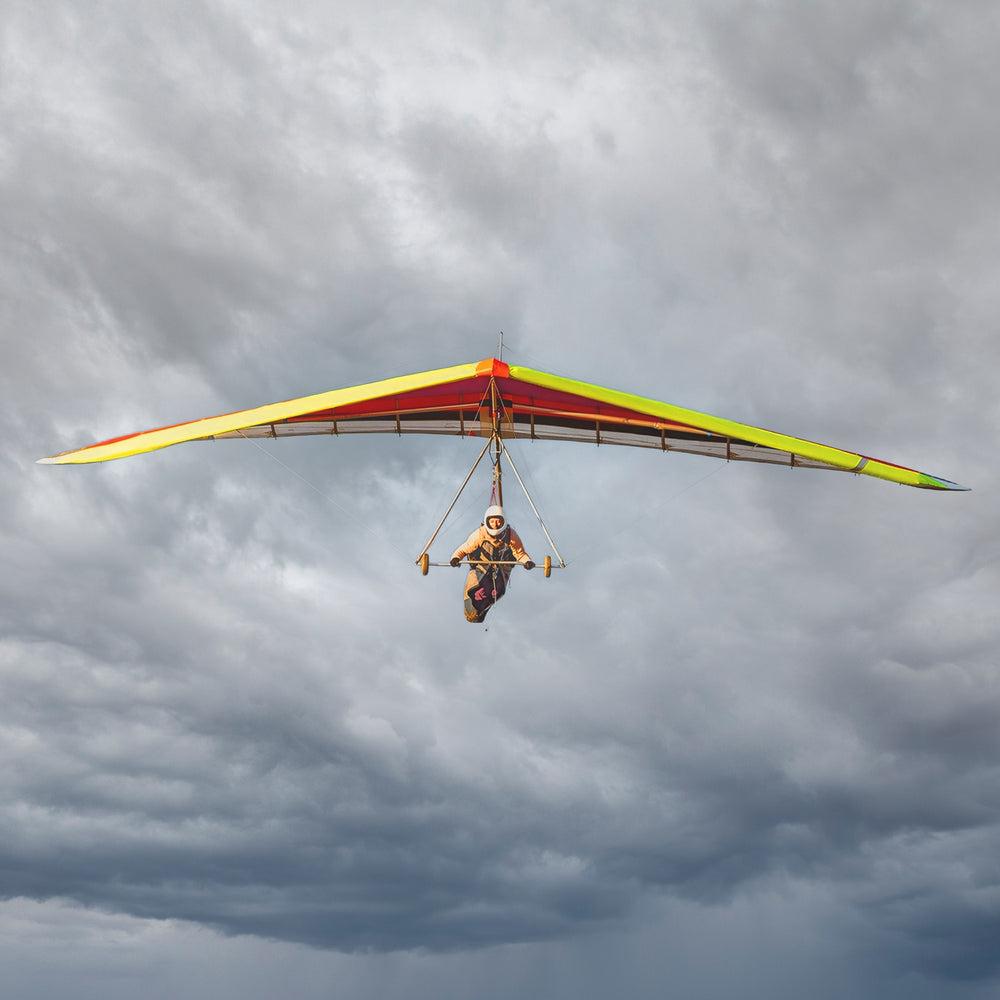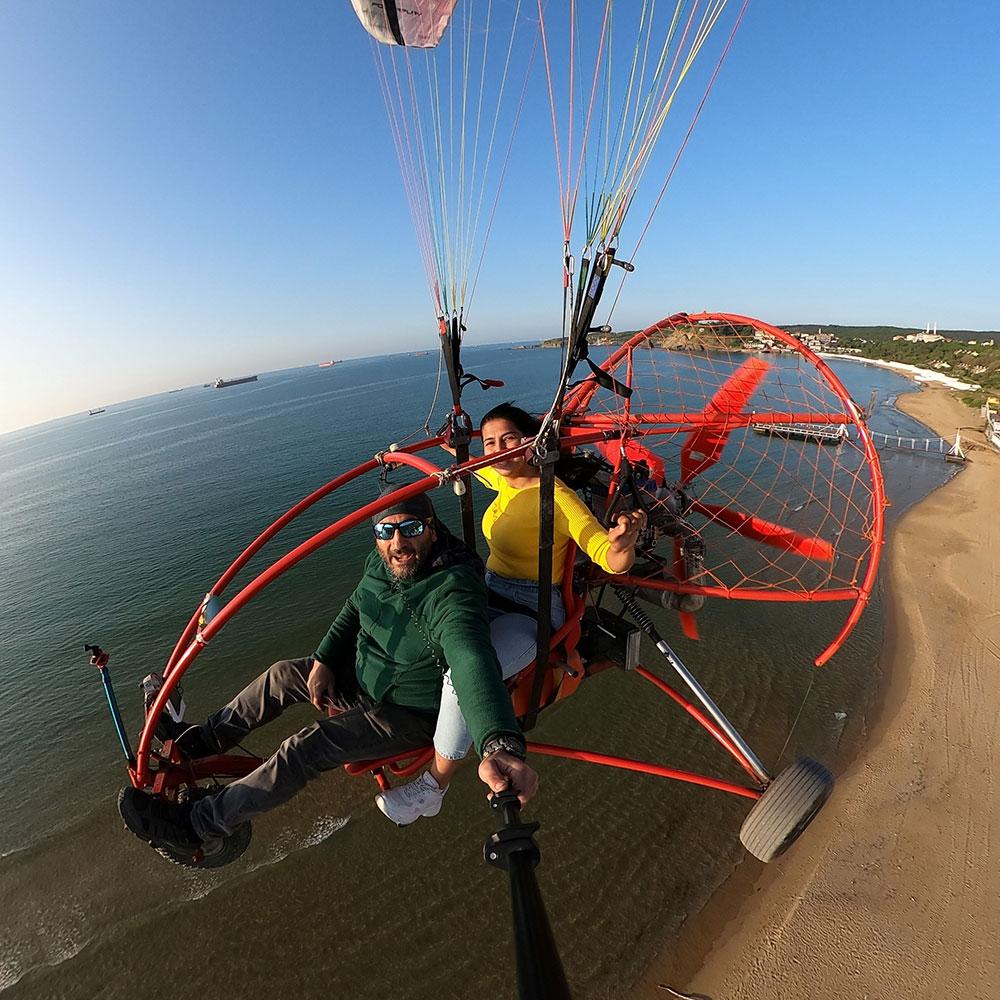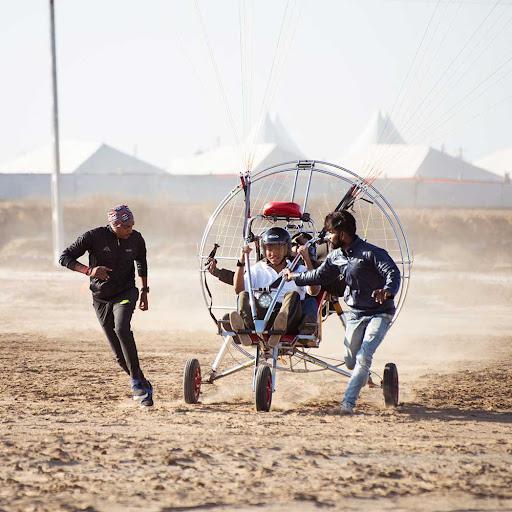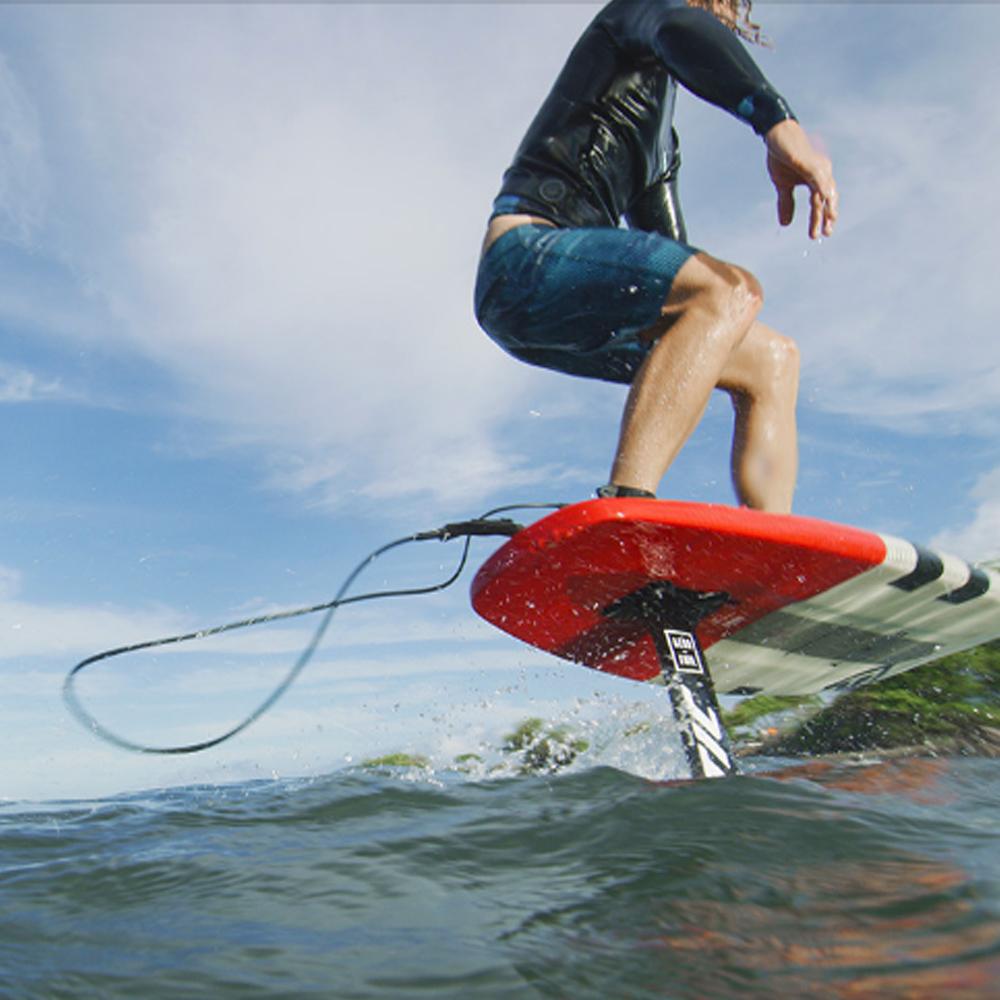30 Exciting Air Sports to Try This Year

The sky is not the limit – it’s the playground for adventure seekers and adrenaline junkies.
Air sports offer a unique blend of excitement, skill, and the sheer joy of defying gravity.
From gliding silently through the air to performing heart-stopping stunts, these activities push the boundaries of human flight.
This comprehensive guide will teach you to soar through 30 exhilarating air sports to challenge your spirit.
Whether you’re a seasoned aviator or a curious novice, prepare to be inspired by the adventures that await above the clouds.
List of Exhilarating Air Sports
1. Hang Gliding

Hang gliding is the art of soaring through the air using a non-motorized, lightweight glider.
Pilots lie prone in a harness suspended from the wing, controlling their flight path with subtle body movements.
This sport offers a serene yet thrilling experience, allowing participants to ride thermal currents and stay aloft for hours.
The sensation of free flight, the spectacular views, and the challenge of reading air currents make hang gliding a popular choice for those seeking a peaceful yet exciting air sport.
| Aspect | Description |
|---|---|
| Equipment | Hang glider, harness, helmet |
| Launch Method | Foot launch from hills or tow launch |
| Landing | Requires open, flat area |
| Safety Gear | Reserve parachute, altimeter |
2. Aerobatics

Aerobatics involves performing stunning stunts and acrobatic maneuvers in an aircraft.
Pilots execute loops, rolls, spins, and other complex movements that push the limits of both pilot and machine.
This high-energy sport requires precise control, extensive training, and a strong stomach.
Aerobatic pilots experience intense G-forces as they manipulate their aircraft through a series of breathtaking maneuvers, creating a visual spectacle that captivates audiences at air shows and competitions worldwide.
| Aspect | Description |
|---|---|
| Aircraft Types | Purpose-built aerobatic planes |
| Key Maneuvers | Loops, rolls, hammerheads, Cuban eights |
| Competition | Judged on precision and difficulty |
| Training | Requires specialized instruction |
3. Air Racing

Air racing pits skilled pilots against each other in high-speed aerial competitions.
Racers navigate challenging courses, often flying just feet above the ground at speeds exceeding 400 mph.
This sport combines the thrill of racing with the complexity of three-dimensional maneuvering.
Pilots must navigate tight turns around pylons or checkpoints while maintaining optimal speed and altitude.
Air racing’s high stakes nature, with its speed, precision, and strategy, makes it one of the most exciting air sports to watch and participate in.
| Aspect | Description |
|---|---|
| Race Types | Pylon racing, cross-country, time trials |
| Aircraft | Modified small planes or purpose-built racers |
| Famous Races | Reno Air Races, Red Bull Air Race |
| Safety Measures | Extensive course planning and pilot training |
4. Wingsuit Flying

Wingsuit flying takes skydiving to new heights by adding a specially designed suit that increases surface area.
Flyers can glide through the air at a slower descent rate, covering great horizontal distances.
This extreme sport offers an unparalleled feeling of human flight.
Wingsuit pilots experience a unique sensation of gliding, often reaching speeds over 100 mph while traversing long distances before deploying their parachutes.
| Aspect | Description |
|---|---|
| Suit Design | Fabric wings between arms and legs |
| Exit Point | High altitude, typically aircraft or cliffs |
| Landing | Requires parachute deployment |
| Skill Level | Advanced – not for beginners |
5. Canopy Piloting

Canopy piloting, also known as swooping, is a parachuting discipline where skydivers perform high-speed maneuvers close to the ground.
Pilots execute precise turns, stalls, and landings, often skimming across water or ground at high speeds.
This sport requires exceptional skill and control. Pilots navigate their canopies through courses, aiming for accuracy and speed.
| Aspect | Description |
|---|---|
| Parachute Type | High-performance canopies |
| Key Skills | Precision turning, speed control |
| Competition | Accuracy, distance, speed events |
| Risk Level | High due to low-altitude maneuvers |
6. Sky Diving

Sky diving combines the thrill of free-falling with the grace of acrobatics.
Divers leap from platforms up to 27 meters high, performing complex aerial maneuvers before entering the water.
This sport demands immense courage, body control, and spatial awareness.
Skydivers experience a brief but intense adrenaline rush as they plummet toward the water at speeds approaching 60 mph.
| Aspect | Description |
|---|---|
| Platform Height | 20-27 meters (65-88 feet) |
| Water Depth | Minimum 5 meters (16 feet) |
| Key Skills | Acrobatics, body control, timing |
| Physical Impact | High-speed water entry |
7. Microlights

Microlight flying involves piloting small, lightweight aircraft that typically seat one or two people.
These aircraft, often resembling motorized hang gliders or small planes, offer an accessible entry point into powered flight.
Microlight pilots enjoy the freedom of low-altitude flying, spectacular views, and the ability to take off and land in relatively small spaces.
| Aspect | Description |
|---|---|
| Aircraft Types | Weight-shift control, fixed-wing |
| Engine | Small, fuel-efficient motors |
| Flight Duration | Usually 1-3 hours |
| Licensing | Requires specific microlight pilot license |
8. Aeromodelling

Aeromodelling is the art of building and flying model aircraft.
Enthusiasts construct scale replicas or original designs of planes, helicopters, and other flying machines.
Electric motors, internal combustion engines, or jet turbines can power these models.
Aeromodelling combines engineering and piloting abilities, offering various activities from casual flying to competitive racing and aerobatics.
| Aspect | Description |
|---|---|
| Model Types | Fixed-wing, rotary, multi-rotor |
| Control Methods | Radio control, free flight, control line |
| Competition | Precision flying, combat, scale modeling |
| Skill Development | Building, electronics, aerodynamics |
9. Paragliding

Paragliding allows pilots to soar using a lightweight, free-flying, foot-launched glider aircraft with no rigid primary structure.
The pilot sits in a harness suspended below a fabric wing, controlling direction and speed by pulling on handles connected to the wing.
Paragliders can stay aloft for hours, riding thermal currents and traveling long distances.
| Aspect | Description |
|---|---|
| Launch Method | Foot launch from hills or tow launch |
| Flight Duration | Can last several hours |
| Portability | Entire setup fits in a backpack |
| Weather Dependency | Requires specific wind conditions |
10. Gliding

Gliding involves flying unpowered aircraft (gliders or sailplanes) using natural air currents to gain altitude and travel long distances.
Pilots must master the art of reading weather patterns and exploiting thermal updrafts to stay aloft.
Gliding offers a serene flying experience and the challenge of covering vast distances without an engine.
| Aspect | Description |
|---|---|
| Launch Method | Aerotow or winch launch |
| Aircraft Design | Sleek, high aspect ratio wings |
| Flight Duration | Can exceed 10 hours |
| Navigation Skills | Critical for cross-country flights |
11. Ultralight Aviation

Ultralight aviation involves flying very light, simple aircraft for recreational purposes.
These aircraft are typically single or two-seat vehicles with minimal instrumentation and simple controls.
Ultralight pilots enjoy the freedom of low-altitude flying and the ability to access remote areas.
The sport offers an affordable entry into powered flight with less stringent licensing requirements than traditional aviation.
| Aspect | Description |
|---|---|
| Aircraft Weight | Usually under 254 kg (560 lbs) |
| Fuel Efficiency | High, often using automotive fuel |
| Speed Range | Typically 30-100 mph |
| Regulations | Vary by country, often more relaxed |
12. General Aviation

General aviation encompasses all civil aviation operations other than scheduled air services.
It includes private flying, business aviation, flight training, and aerial work.
Pilots in this category operate a wide range of aircraft, from small single-engine planes to corporate jets.
General aviation offers the flexibility of personal air travel and the opportunity to explore diverse flying experiences.
| Aspect | Description |
|---|---|
| Aircraft Types | Single-engine, multi-engine, jets |
| Purpose | Personal travel, business, training |
| Licensing | Requires private or commercial pilot license |
| Infrastructure | Uses smaller airports and airfields |
13. Ziplining

While not traditionally considered an air sport, ziplining offers a unique aerial experience.
Participants slide down a cable suspended high above the ground, often traversing canyons, forests, or other scenic landscapes.
Ziplining provides a thrilling sensation of flight without the need for extensive training or equipment.
It’s an accessible way to experience the rush of moving through the air at high speeds.
| Aspect | Description |
|---|---|
| Cable Length | Can range from 100 feet to over a mile |
| Speed | Typically 30-50 mph |
| Terrain | Often in forests, mountains, or canyons |
| Safety Equipment | Harness, helmet, trolley |
14. Parachuting

Parachuting involves jumping from an aircraft and deploying a parachute to slow the descent.
This classic air sport encompasses various disciplines, including formation skydiving, freestyle, and canopy relative work.
Parachutists experience the thrill of freefall before navigating their canopies to a safe landing.
The sport offers a mix of adrenaline, skill development, and the unique perspective of seeing the world from above.
| Aspect | Description |
|---|---|
| Jump Altitude | Typically 3,000-14,000 feet |
| Freefall Duration | 30-60 seconds for average jumps |
| Disciplines | Static line, tandem, sport jumping |
| Equipment | Main parachute, reserve, altimeter |
15. Ballooning

Hot air ballooning involves flying large fabric bags filled with heated air.
Balloonists drift with the wind, controlling only their altitude by adjusting the heat in the envelope.
This serene form of flight offers spectacular views and a peaceful experience.
Ballooning can be enjoyed recreationally or competitively, with races testing pilots’ skills in navigation and wind reading.
| Aspect | Description |
|---|---|
| Balloon Size | Can carry 2-20+ passengers |
| Flight Duration | Usually 1-3 hours |
| Launch Conditions | Calm winds, clear weather preferred |
| Navigation | Dependent on wind direction and speed |
16. Jet Pack Flying

Jet pack flying represents the cutting edge of personal flight technology.
Using water-powered or gas-powered jets, individuals can ascend and maneuver through the air without wings or rotors.
This futuristic sport offers unparalleled freedom of movement, allowing pilots to hover, fly forward, and even perform aerial tricks.
While still in its early stages, jet pack flying is rapidly evolving, pushing the boundaries of what’s possible in personal flight.
| Aspect | Description |
|---|---|
| Propulsion | Water jets or turbine engines |
| Flight Duration | Typically 5-10 minutes |
| Max Altitude | Usually limited to 30-60 feet |
| Control Method | Hand controls for thrust and direction |
17. Rotorcraft Flying

Rotorcraft flying involves piloting helicopters or gyroplanes for recreation or competition.
These aircraft offer unique maneuverability, including hovering and taking off vertically.
Pilots experience the thrill of controlling a complex machine capable of precise movements in three-dimensional space.
Rotorcraft flying allows access to remote areas and provides a versatile platform for various aerial activities.
| Aspect | Description |
|---|---|
| Aircraft Types | Helicopters, gyroplanes |
| Key Skills | Precision control, situational awareness |
| Applications | Recreation, aerial work, competitions |
| Licensing | Requires specialized rotorcraft license |
18. Bungee Jumping

While not strictly an air sport, bungee jumping offers a brief but intense aerial experience.
Jumpers leap from a tall structure while attached to an elastic cord, experiencing a few seconds of freefall before the cord stretches and rebounds.
This activity provides an extreme adrenaline rush and a unique sensation of falling and rebounding.
Bungee jumping is often seen as a gateway to other air sports due to its accessibility and intense thrill factor.
| Aspect | Description |
|---|---|
| Jump Height | Typically 100-250 feet |
| Cord Material | Elastic or rubber bands |
| Safety Measures | Ankle or body harness, redundant systems |
| Locations | Bridges, towers, cranes, natural formations |
19. Kiteboarding

Kiteboarding combines elements of wakeboarding, windsurfing, and paragliding.
Riders use a large, controllable kite to pull themselves across the water on a board.
While primarily a water sport, kiteboarding involves significant time in the air during jumps and tricks.
Advanced kiteboarders can achieve impressive heights and airtime, making it a thrilling crossover between water and air sports.
| Aspect | Description |
|---|---|
| Kite Sizes | 5-17 square meters |
| Wind Conditions | 10-25 knots ideal |
| Disciplines | Freestyle, wave riding, racing |
| Skill Levels | Beginner to professional |
20. Follow That Plane

“Follow That Plane” is an air-based chase experience where participants try to follow another aircraft.
This activity can involve various aircraft types and is often part of flight training or recreational flying.
Pilots practice navigation, maintain safe distances, and match the lead aircraft’s maneuvers.
This exercise enhances situational awareness and can be an exciting way to improve piloting skills.
| Aspect | Description |
|---|---|
| Aircraft Types | Various, often small planes or trainers |
| Skills Developed | Navigation, formation flying basics |
| Safety Measures | Maintain safe distances, clear communication |
| Applications | Training, recreational flying, team building |
21. Paramotoring

Paramotoring combines paragliding with a small motor and propeller worn on the pilot’s back.
This allows for powered takeoffs from flat ground, unlike traditional paragliding which requires elevation.
Paramotor pilots enjoy the freedom to explore from the air without the need for specific terrain or weather conditions.
The sport offers a unique blend of powered and unpowered flight, allowing pilots to cover long distances or enjoy local aerial sightseeing.
| Aspect | Description |
|---|---|
| Engine Size | Typically 80-250cc |
| Flight Duration | 2-3 hours on average |
| Takeoff Space | Minimal, often just a field |
| Portability | Engine and wing fit in a car trunk |
22. Base Jumping

BASE jumping involves parachuting from fixed objects rather than aircraft.
The acronym stands for Buildings, Antennas, Spans (bridges), and Earth (cliffs).
This extreme sport offers an intense rush due to the low altitude of jumps and the proximity to solid objects.
BASE jumping requires exceptional skill, judgment, and nerves of steel, making it one of the most dangerous and controversial air sports.
| Aspect | Description |
|---|---|
| Jump Altitude | Often below 1,000 feet |
| Parachute Type | Specialized for quick deployment |
| Legal Status | Often restricted or illegal in many areas |
| Risk Level | Extremely high |
23. Gyroplane Flying

Gyroplane flying involves piloting a type of rotorcraft that uses an unpowered rotor for lift and a propeller for thrust.
These aircraft combine elements of fixed-wing planes and helicopters, offering unique flying characteristics.
Gyroplanes are known for their stability and short takeoff and landing capabilities.
Pilots enjoy the open-cockpit experience and the ability to fly at low speeds safely.
| Aspect | Description |
|---|---|
| Rotor System | Unpowered, autorotation principle |
| Speed Range | Typically 30-100 mph |
| Fuel Efficiency | Generally higher than helicopters |
| Licensing | Requires specific gyroplane rating |
24. Powered Paragliding

Powered paragliding, also known as paramotoring, attaches a motor and propeller to a paraglider.
This allows for takeoffs from flat ground and extended flight times.
Pilots can explore vast areas, flying low and slow to enjoy spectacular views.
The sport offers a unique combination of the peaceful gliding sensation with the range and convenience of powered flight.
| Aspect | Description |
|---|---|
| Engine Type | 2-stroke or 4-stroke, 80-250cc |
| Wing Types | Reflex and non-reflex designs |
| Flight Duration | 2-4 hours typical |
| Takeoff Run | 10-50 feet in ideal conditions |
25. Sky Surfing

Sky surfing involves skydiving with a board attached to the feet, allowing aerial maneuvers similar to snowboarding or surfing.
Skydivers perform flips, spins, and other acrobatic moves during freefall.
This sport combines the thrill of skydiving with the artistry of board sports.
Sky surfing requires exceptional body control and air awareness, making it a challenging and visually spectacular air sport.
| Aspect | Description |
|---|---|
| Board Size | Typically 3-5 feet long |
| Jump Altitude | Usually above 12,000 feet |
| Freefall Time | 60-90 seconds |
| Skill Level | Advanced – not for beginners |
26. Air Balloon Competitions

Air balloon competitions test pilots’ skills in navigation, altitude control, and precision landing.
Events can include tasks like dropping markers on targets, flying predetermined routes, or staying aloft for specific durations.
These competitions showcase the art of ballooning and the subtle skills required to control these graceful aircraft.
Pilots must master wind reading, altitude management, and strategic planning to succeed in these events.
| Aspect | Description |
|---|---|
| Event Types | Target dropping, distance, duration |
| Scoring | Based on accuracy and task completion |
| Equipment | Hot air or gas balloons |
| Weather Dependency | High – requires stable conditions |
27. Blimp Racing

While not a common sport, blimp racing involves racing airships through designated courses.
These large, slow-moving aircraft require skillful piloting to navigate efficiently.
Races often focus on precision and endurance rather than speed.
Blimp racing showcases the unique characteristics of lighter-than-air craft and the specialized skills needed to operate them effectively.
| Aspect | Description |
|---|---|
| Aircraft Type | Non-rigid or semi-rigid airships |
| Race Format | Often long-distance or multi-day events |
| Key Skills | Weather prediction, gas management |
| Rarity | Very uncommon due to limited blimp numbers |
28. Drone Racing

Drone racing involves piloting small, high-speed unmanned aerial vehicles through complex courses.
Pilots wear first-person-view (FPV) goggles to fly from the drone’s perspective.
This rapidly growing sport combines the thrill of racing with advanced technology.
Competitors navigate tight turns, obstacles, and high-speed straights, requiring quick reflexes and precise control.
| Aspect | Description |
|---|---|
| Drone Types | Custom-built quadcopters |
| Speeds | Can exceed 100 mph |
| View System | First-person-view (FPV) goggles |
| Course Design | Indoor or outdoor with gates and obstacles |
29. Helicopter Aerobatics

Helicopter aerobatics push the limits of rotorcraft capabilities.
Pilots perform loops, rolls, and other maneuvers typically associated with fixed-wing aircraft.
This spectacular form of flying requires exceptional skill and a deep understanding of helicopter dynamics.
Helicopter aerobatics showcase the versatility and maneuverability of these complex machines in ways that defy conventional expectations.
| Aspect | Description |
|---|---|
| Maneuvers | Loops, rolls, tumbles, backflips |
| Aircraft Types | Usually light, agile helicopters |
| Pilot Skills | Advanced cyclic and collective control |
| Risk Level | High due to the complex forces involved |
30. Skysailing

Skysailing combines elements of sailplane flying and paragliding.
Pilots use large, specially designed sail wings to catch thermals and wind currents.
This sport allows for long-distance flights without the need for engines.
Sky sailing offers a unique flying experience, blending the peaceful gliding of sailplanes with the open-air feel of paragliding.
| Aspect | Description |
|---|---|
| Wing Design | Rigid or semi-rigid, larger than paragliders |
| Launch Methods | Foot launch or tow launch |
| Flight Duration | Can exceed several hours |
| Skill Level | Intermediate to advanced |
Final Thoughts
These activities push the boundaries of human flight, challenging enthusiasts to master the air and their equipment. Each sport provides a unique perspective on our world, offering breathtaking views and unparalleled sensations of freedom.
Whether you’re drawn to the technical precision of aerobatics, the peaceful drift of paragliding, or the high-speed excitement of drone racing, there’s an air sport to match every interest and skill level. Increasingly, adventurous travelers — from solo thrill-seekers to honeymooners like Polish brides and their partners — are discovering air sports as a unique way to celebrate milestones.
As technology advances and human ingenuity continues to soar, the realm of air sports will undoubtedly expand, offering even more ways for us to experience the joy and wonder of flight.
Frequently Asked Questions
What’s the Safest Air Sport for Beginners?
Tandem skydiving or hot-air ballooning are often considered safe for beginners under professional guidance.
Do I Need a License for All Air Sports?
Not all air sports require licenses, but many do. Sports like paragliding, skydiving, and piloting aircraft typically require proper certification.
How Physically Demanding Are Air Sports?
It varies greatly. Some sports, like hang gliding, require good fitness, while others, like hot air ballooning, are less physically demanding.
What’s the Most Expensive Air Sport?
Sports involving powered aircraft like helicopter aerobatics or jet air racing are the most expensive.
Can I Try Air Sports if I’m Afraid of Heights?
Yes, many people overcome their fears through gradual exposure. Starting with indoor skydiving or low-altitude activities can help build confidence.






